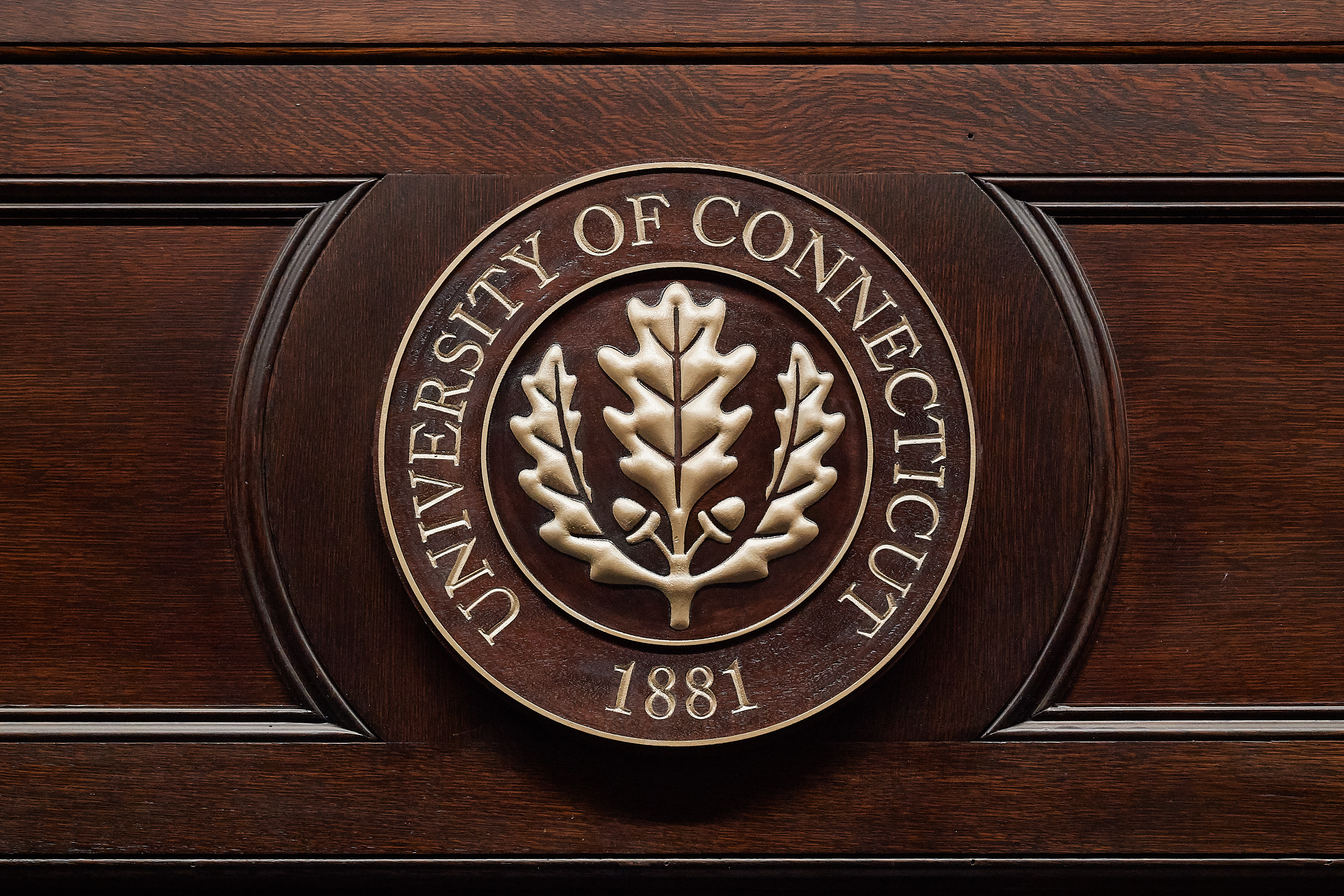UConn trustees are expected to decide next month on whether to reduce the previously approved tuition rate for the 2021-22 academic year as they consider ways to help students, families, and the University cope with pandemic-related difficulties.
UConn administrators on Wednesday presented a proposal to the Board of Trustees and its Financial Affairs Committee that outlined options, including the potential to reduce by half the tuition adjustment that had previously been approved as part of a current five-year plan.
With Wednesday’s presentation serving as a starting point for the discussion, the Financial Affairs Committee decided to consider the matter in March and make a recommendation to the full board afterward.
University officials plan to collect more information over the next few weeks to help trustees in those discussions, keeping in mind the uncertainty that the University faces over financial implications of the ongoing COVID pandemic, the potential state budget allocation, federal assistance levels, and other factors.
The proposal presented Wednesday also keeps most fees flat with modest increases in only a few categories, including helping the University significantly expand access to mental health services by adding more counselors and mental health educators. Those enhancements have been frequently requested by students and recently also were recommended by the President’s Task Force on Mental Health and Wellness.
Trustees also reviewed the University’s plan to distribute $10.7 million in additional student financial aid – on top of the regular amount that UConn provides yearly to students – as part of its allocation from the most recent federal COVID relief package.
UConn reviews its fee schedule each winter in preparation for the following academic year, and sets tuition on a multi-year schedule to provide students and families with predictability so they can better plan for coming years. The University is currently in the second year of a five-year tuition adjustment plan adopted in late 2019 – before the pandemic — to run through spring 2025.
The tuition plan, which limited increases to their lowest level in five years, includes a 4.3 percent increase for in-state tuition starting this fall. Those yearly adjustments are based on the impact of state fringe benefit costs and state aid to UConn, inflation in the higher education sector nationwide, and related fiscal measures.
Under the scenario presented to trustees Wednesday as a starting point for discussion, the amount would be cut in half to 2.2 percent, or $312 rather than the original $625. It would be the lowest percentage change since FY 2000, when tuition was adjusted by 1.39 percent.
If approved by trustees, fees for self-supporting services such as housing, dining, recreation, the General University Fee (GUF), infrastructure maintenance and technology would be frozen at their current level for the coming academic year.
Modest increases would be made in a few categories to directly benefit the student experience, including $28 per semester for Storrs-based students to help fund the expansion of UConn Student Health & Wellness (SHaW) mental health services.
The proposal envisions adding four more mental health clinicians with various roles and specialties, and three health educators focused on mental health needs. While strengthening mental health services and improving access, it would also allow SHaW to develop expertise in diversity and inclusion best practices.
Under the proposal presented to trustees, the transit fee would also be adjusted by $4 per semester to pay for the state U-Pass, the popular statewide program which gives college and university students unlimited rides on all Connecticut public transit buses and trains. State officials are working on an app to improve students’ ability to learn about the pass and take advantage of its benefits, which will add to its value and ease of use.
UConn’s fee proposal for the coming fiscal year would adjust student activity fees by $2 per semester to help offset increased printing costs for the Nutmeg Yearbook – the first increase in many years — and to support programming by SUBOG (Student Union Board of Governors). The Student Activity and Service Fee Advisory Committee approved the proposed increase, and it passed in a referendum by a majority vote.
The University also proposes adjusting fees to participate in certain self-supporting certificate and professional programs, which are set according to market; they are reviewed annually to benchmark against competitors.
University officials also discussed plans to distribute student aid as part of its allocation from the second Federal Higher Education Emergency Relief Fund, a component of the latest national stimulus package, the Coronavirus Response and Relief Supplemental Appropriations Act.
UConn will receive about $32.2 million in total funding under that supplemental COVID relief act, with $10.7 million of the funds going to student financial aid as directed by the federal legislation.
UConn intends to distribute the student aid in several phases, allowing it to support students who have exceptional or modest financial needs in addition to those who have a pandemic-related hardship. Students who qualify in the first phase could start seeing funds as early as mid March.
“As the federal act prescribes, UConn’s plan for distribution calls for immediate and fixed amounts to our students with the greatest financial need, followed by opportunities for support to students facing significant financial strain during this challenging time,” Nathan Fuerst, UConn’s vice president for enrollment planning and management, said last week.
“Beyond this, UConn is taking steps to spread the distribution of funds over the course of the spring, setting aside a portion of the funds later as the needs of our students continue to evolve,” he said.
UConn will use information currently on file from FAFSA (Free Application for Federal Student Aid) and other forms to identify students with qualifying financial need, and students who are experiencing pandemic-related hardships or otherwise have lower financial needs will be able to fill out an online form.
The current federal aid legislation limits student awards to eligible U.S. citizens or permanent residents, but UConn plans to use institutional funds to mirror funding to eligible students who file the Undocumented Student Aid Application.
In the first phase of distributing the funding to students, the grant awards will range from $250 to $500 depending on need. More than 12,000 UConn students across undergraduate, graduate, and professional levels – including law, dental and medical students – are expected to qualify for financial assistance in the early distribution phases.
In a subsequent phase, students who are facing significant financial constraints during the pandemic will be invited to submit an online request form for $250 of support. The remaining federal aid after those distributions will then be set aside to determine how to best meet students’ ongoing needs later in the spring.
The remainder of the federal money not set aside for student financial aid will go to defray expenses at UConn associated with the coronavirus, including lost revenue, reimbursement for expenses already incurred, technology costs associated with a transition to distance education, and associated faculty and staff trainings.
With this federal assistance, UConn can close its projected deficit of $8 million during the current fiscal year and use it as a bridge to help mitigate what is currently projected to be a substantial deficit in the next fiscal year, which begins in July 2021.
The institutional aid contained in the law will help the university to address these expected deficits, which are largely due to COVID-related expenses, revenue lost due to COVID, and structural deficits tied to the state’s unfunded legacy costs, meaning retirement and retiree health liabilities.



